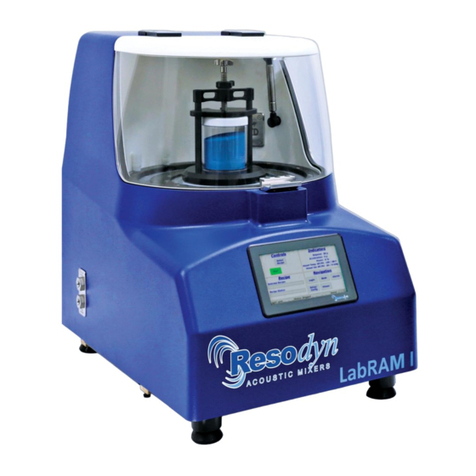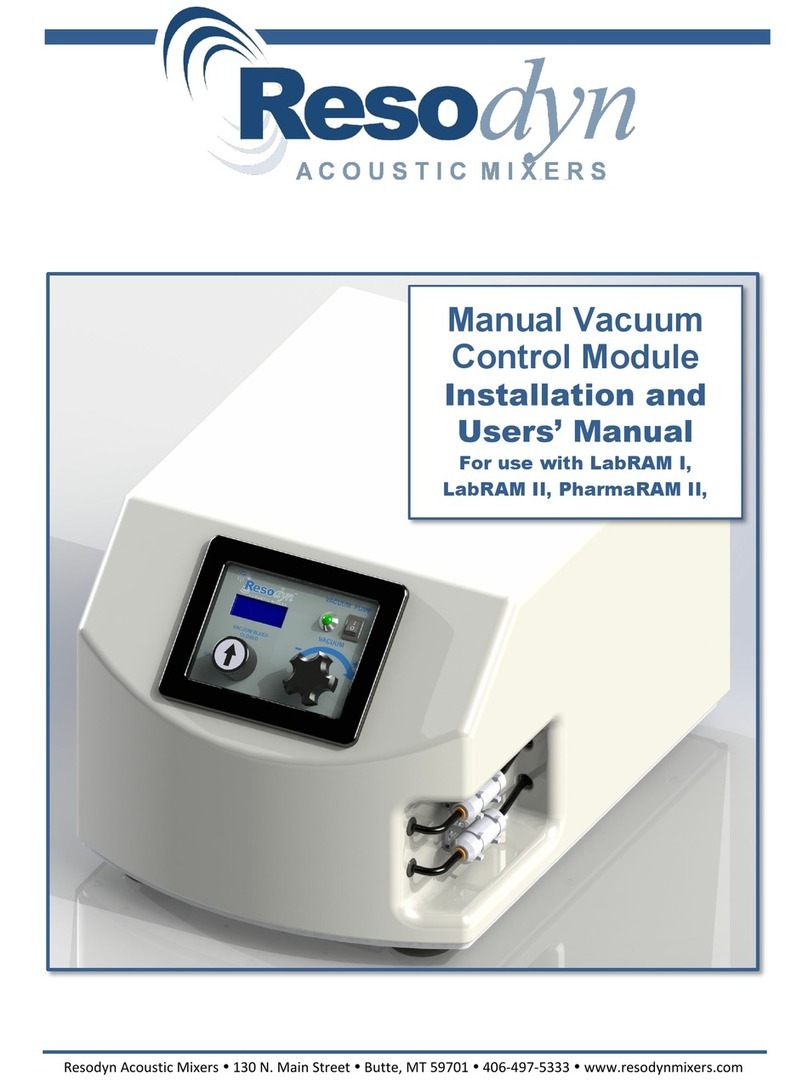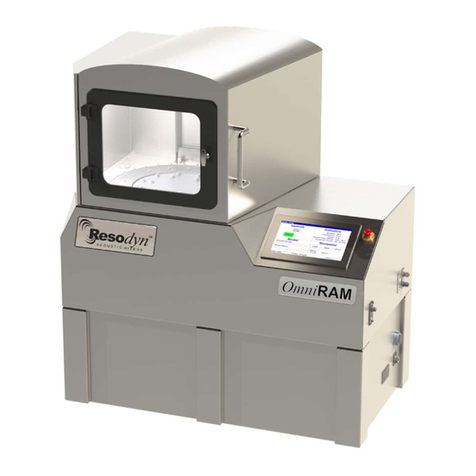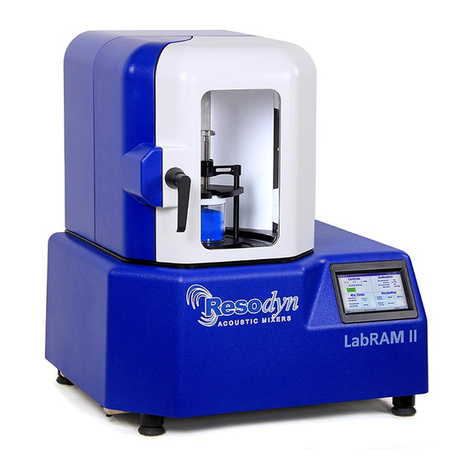LabRAM II Spray System Instruction Manual
Rev. 042618
Resodyn Acoustic Mixers, Inc. 3 www.resodynmixers.com
Table of Contents
1Introduction .....................................................................................................................................4
2Definitions........................................................................................................................................5
3Safety Information...........................................................................................................................6
3.1 General Safety and Assembly Considerations........................................................6
3.2 Warnings and Cautions...........................................................................................7
3.3 Important Safety Notes...........................................................................................8
4General Notes................................................................................................................................11
4.1 System Description...............................................................................................11
4.2 Voltage Level and Power Consumption ................................................................13
5Installation .....................................................................................................................................14
5.1 Spray System Overall Assembly Pictures.............................................................14
5.2 Spray System Installation......................................................................................16
5.3 Installing the Ultrasonic Atomizer Nozzle Generator .............................................19
5.4 Connect Peristaltic Pump Options to Ultrasonic Nozzle ........................................19
5.5 Connecting Syringe Pump to Ultrasonic Nozzle....................................................20
6Operating Instructions..................................................................................................................21
6.1 Power-up Equipment ............................................................................................21
6.2 LabRAM II Spray System Operation .....................................................................22
6.3 Power-Down.........................................................................................................28
6.4 Maintenance and Cleaning ...................................................................................29
6.5 General Cleaning Instructions...............................................................................32
7Warranty and Service ...................................................................................................................33
7.1 Limited Warranty...................................................................................................33
7.2 Maintenance and Service......................................................................................33
8Supplemental Information............................................................................................................34
8.1 Other Operating Manuals......................................................................................34
8.2 Replacement Parts ...............................................................................................35

































